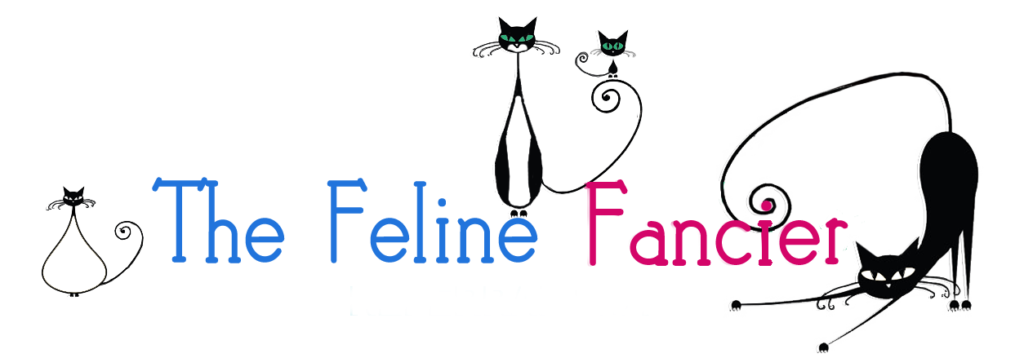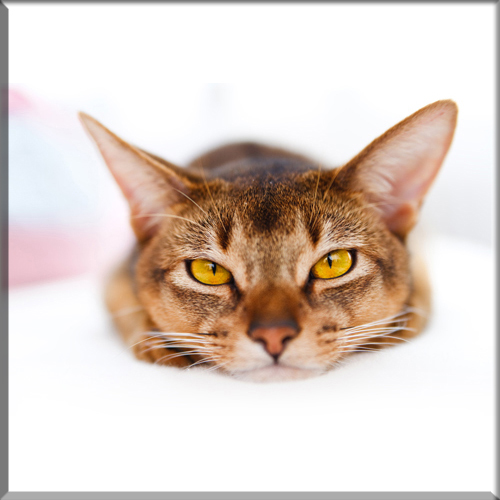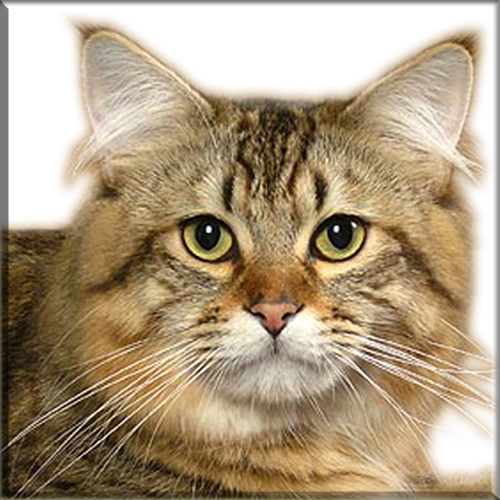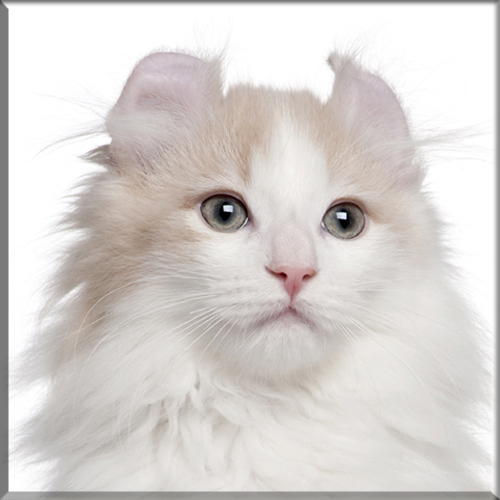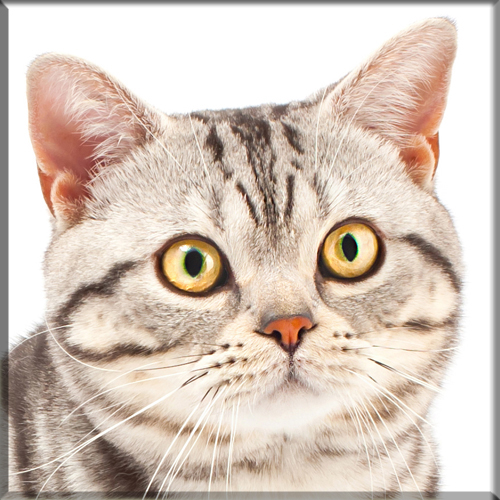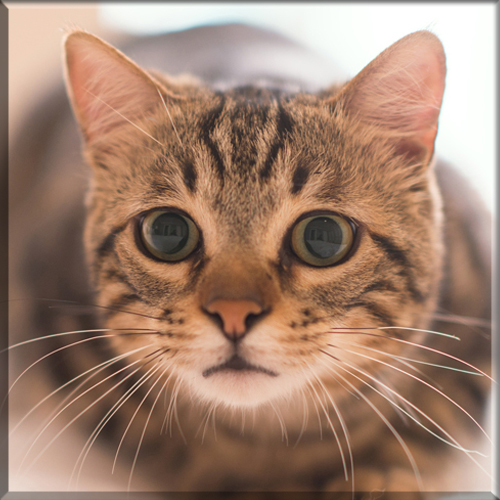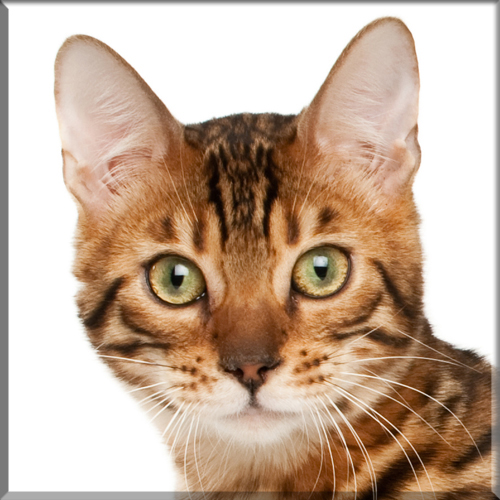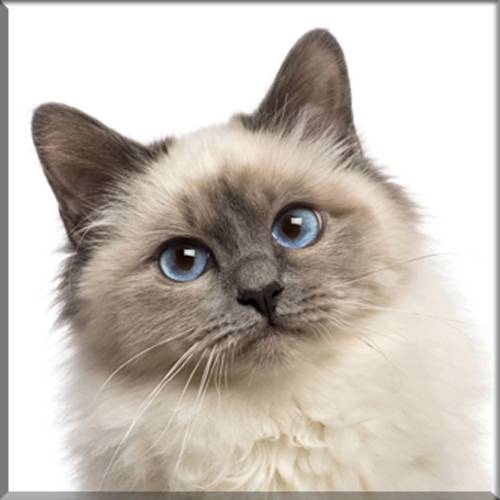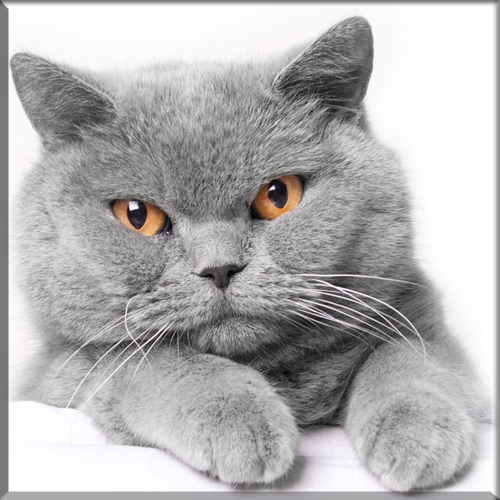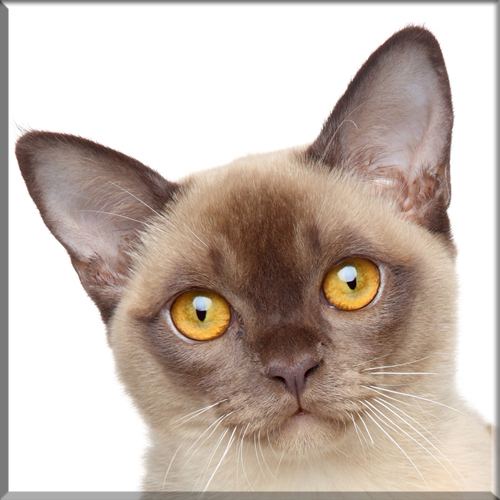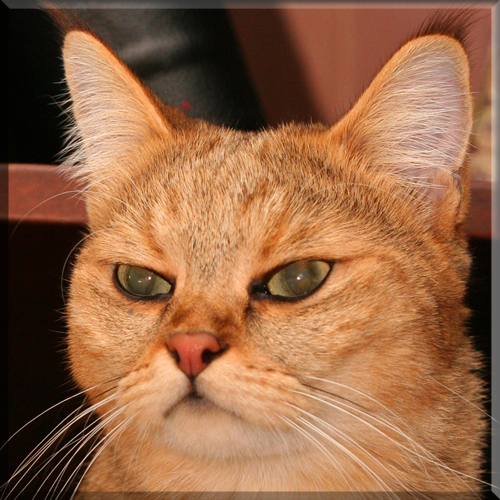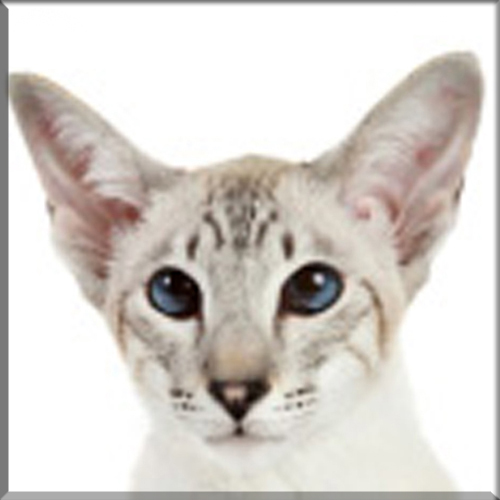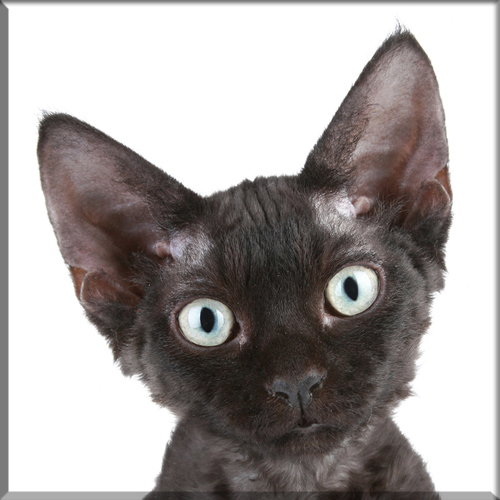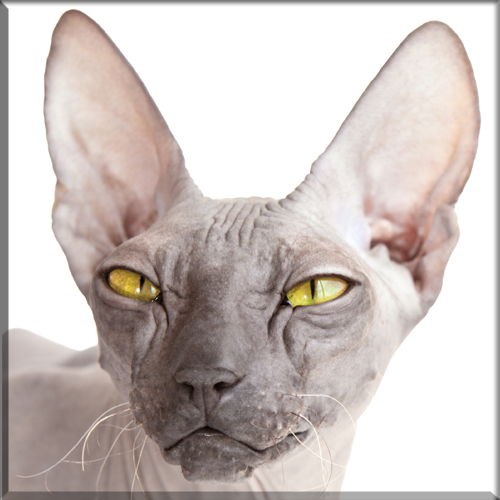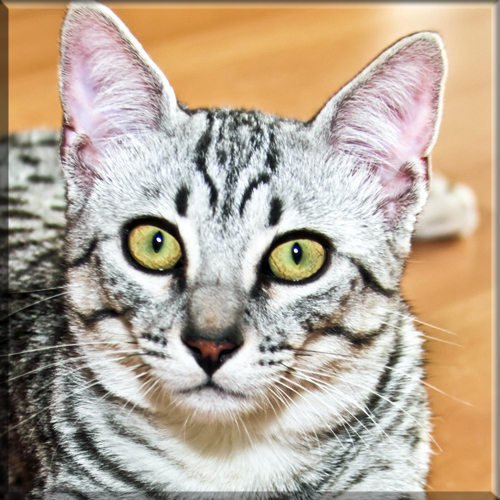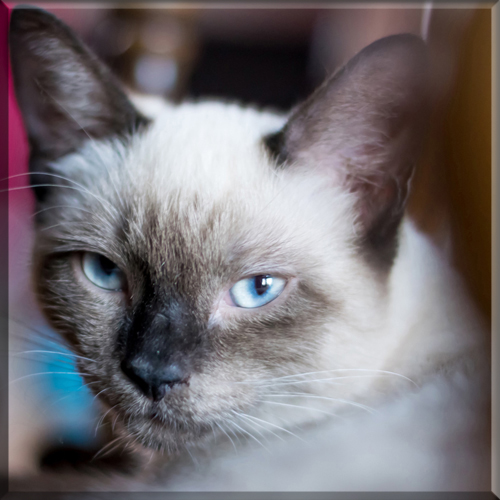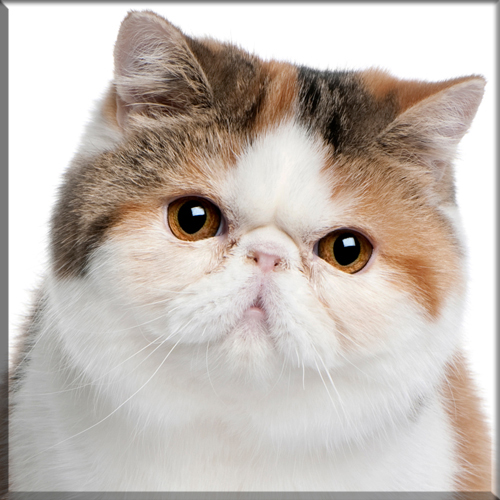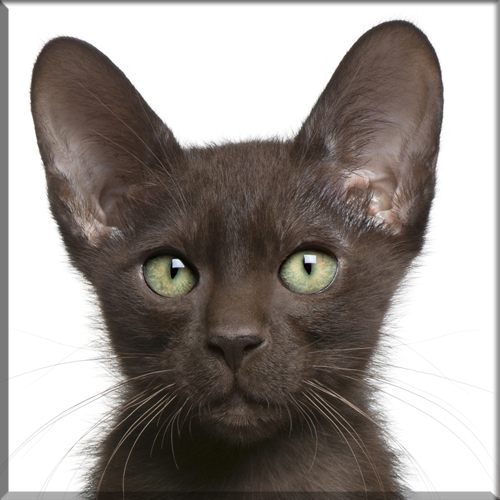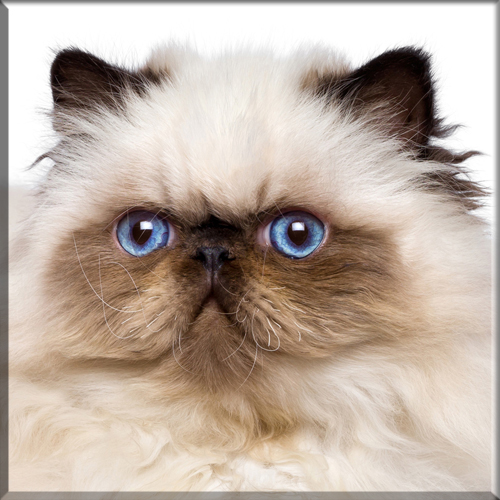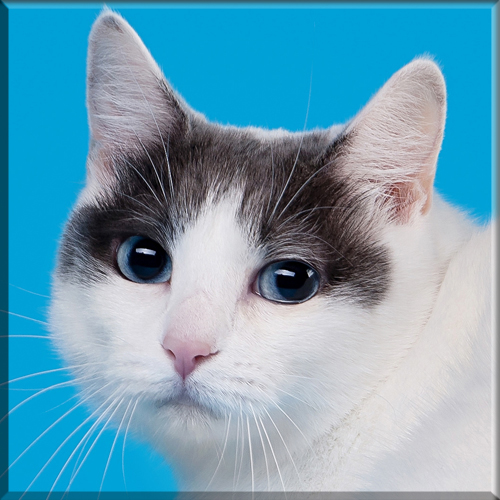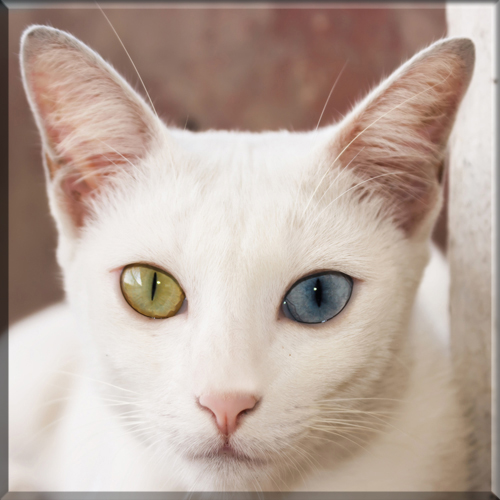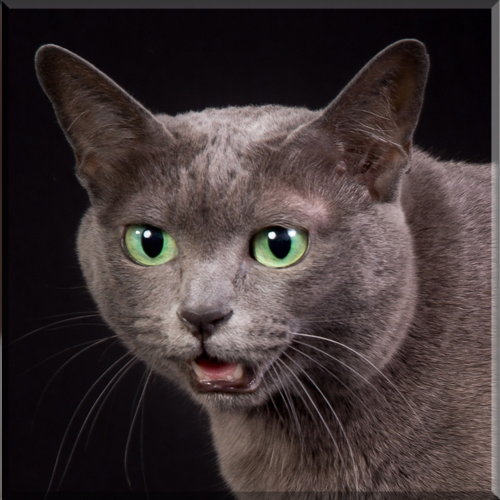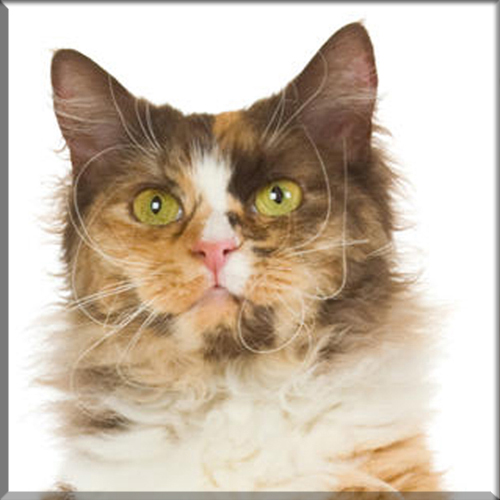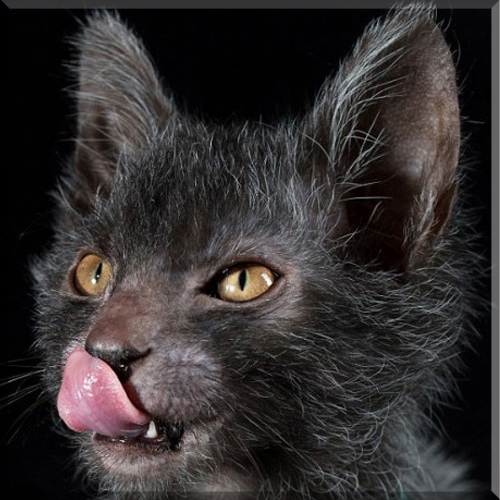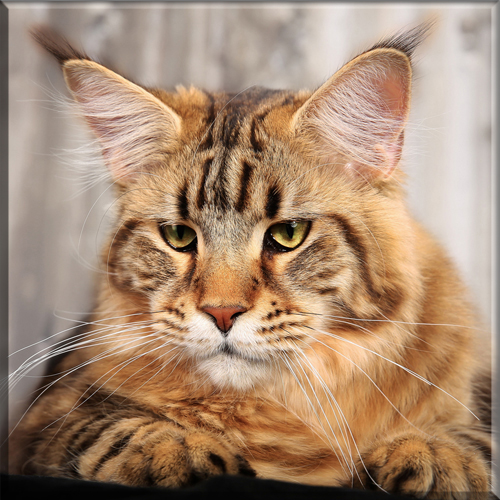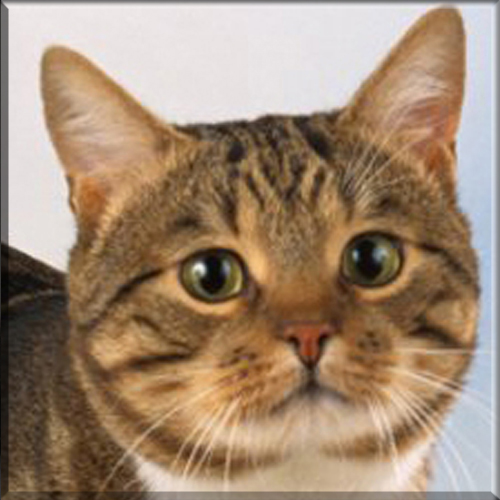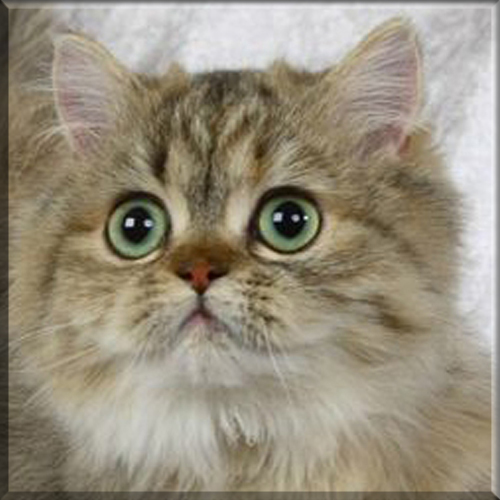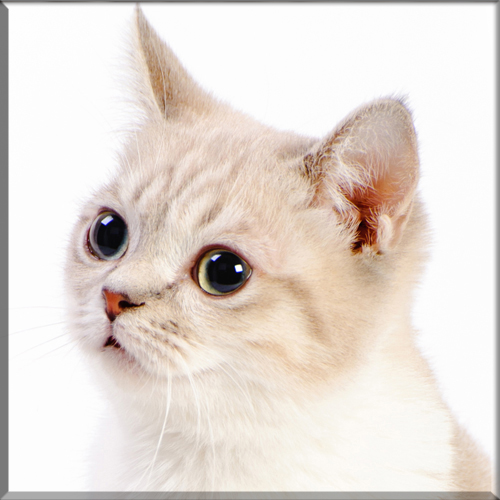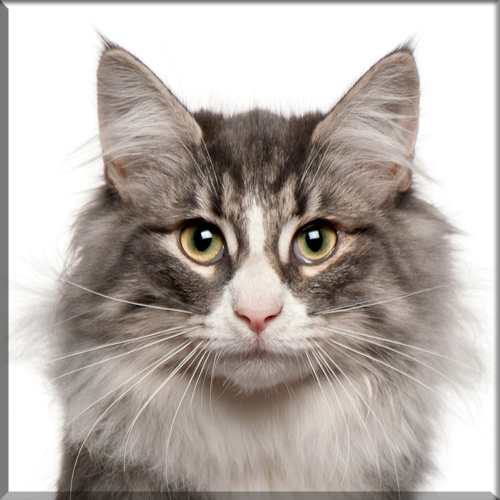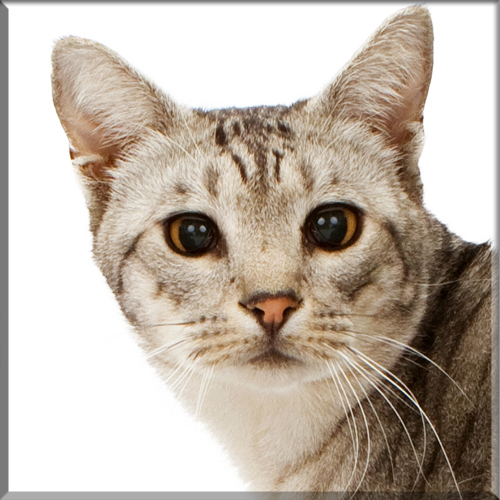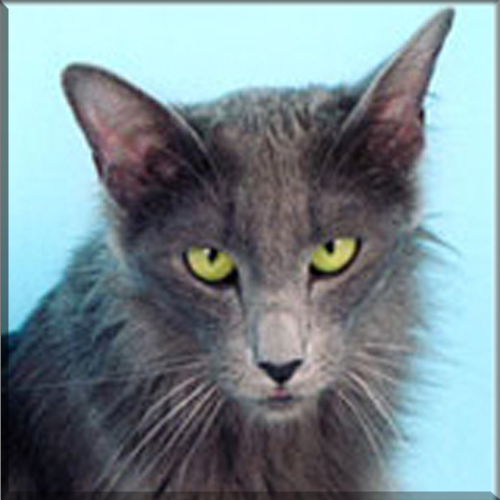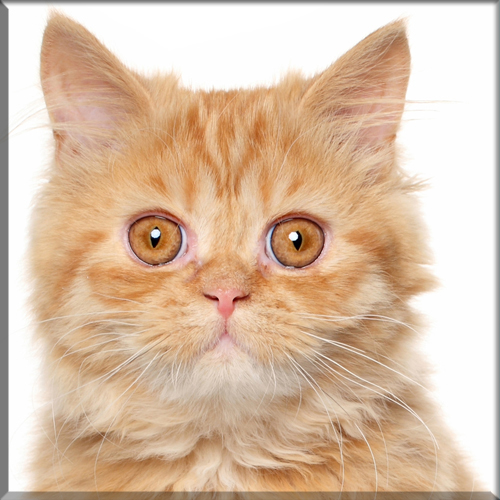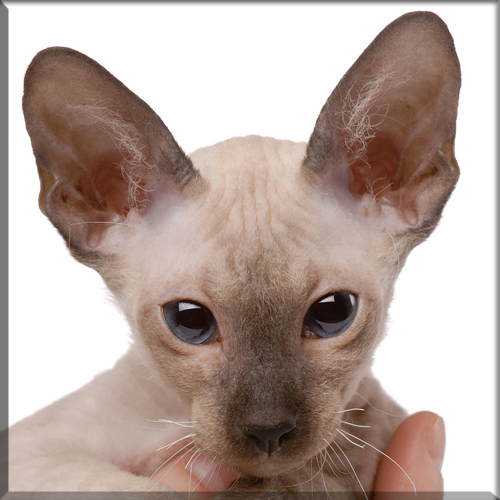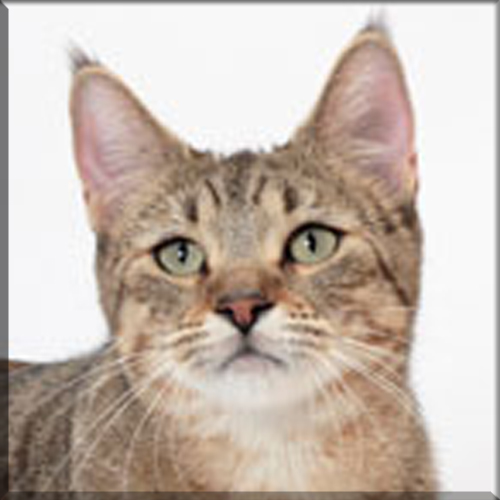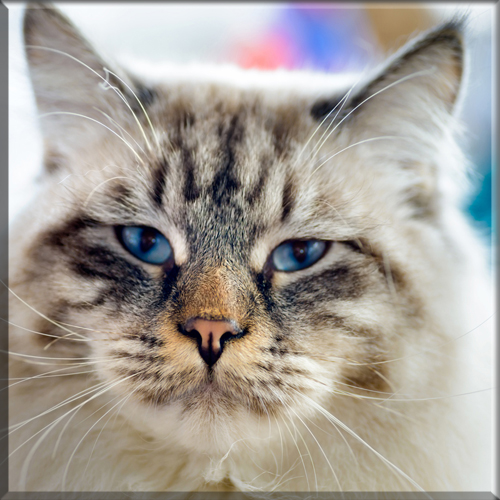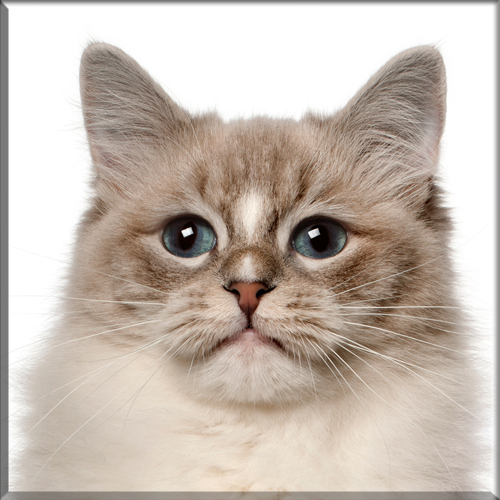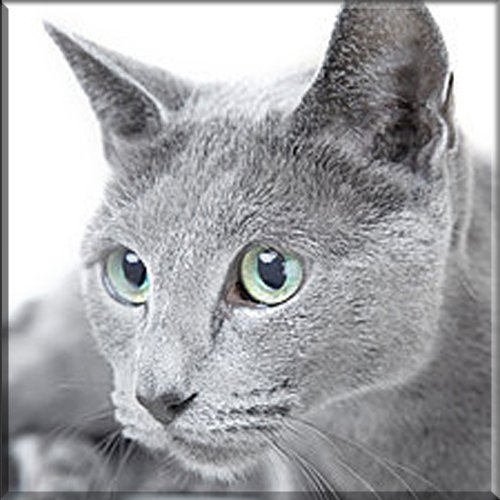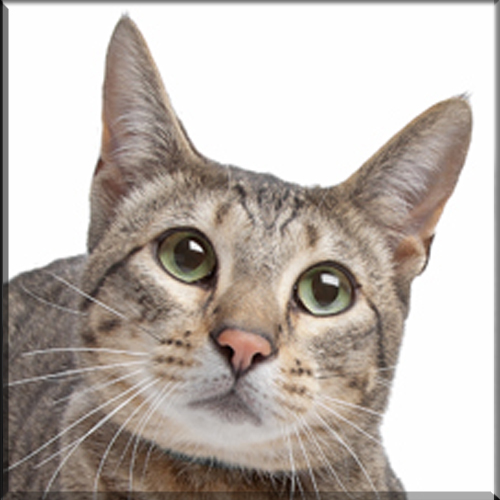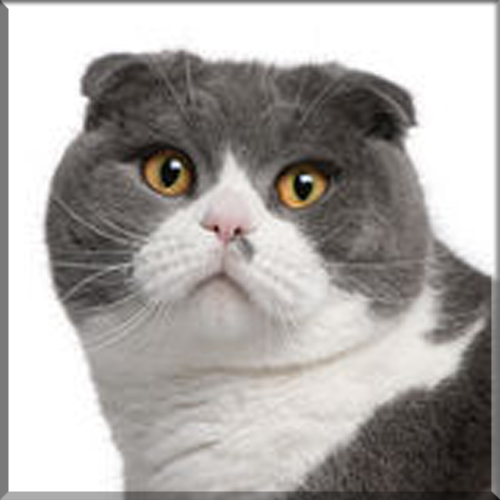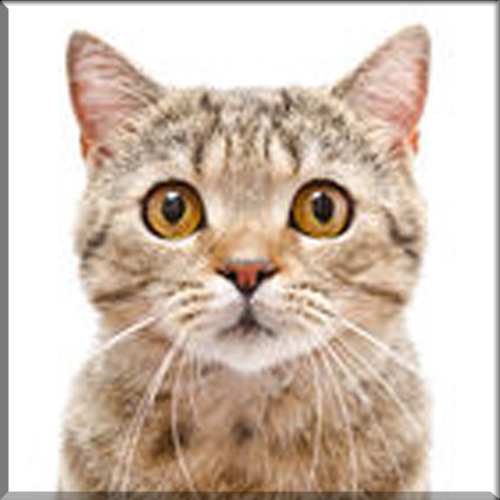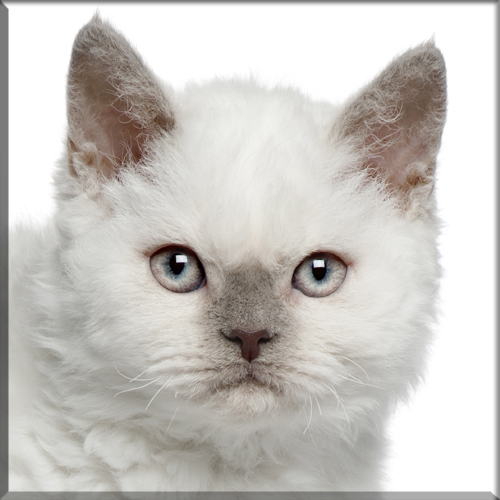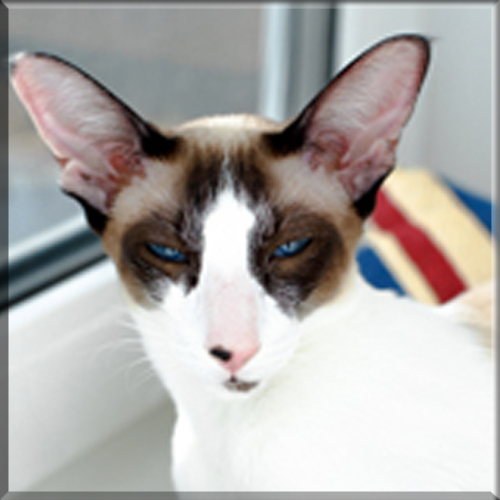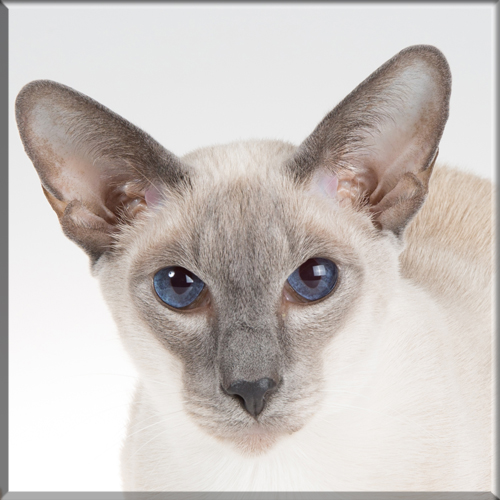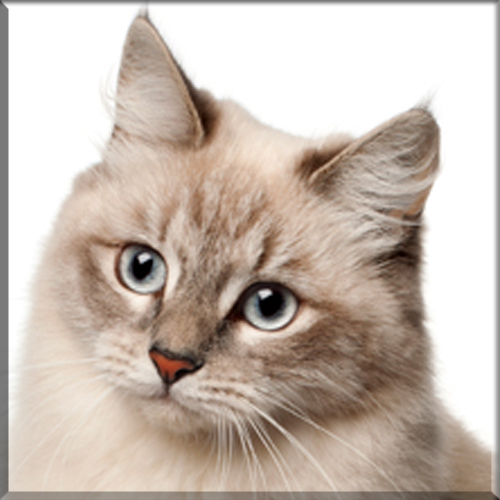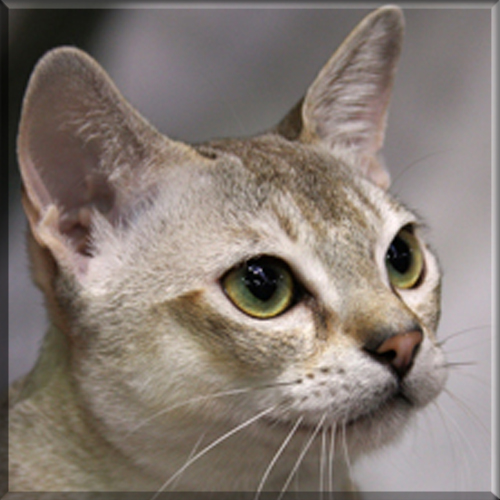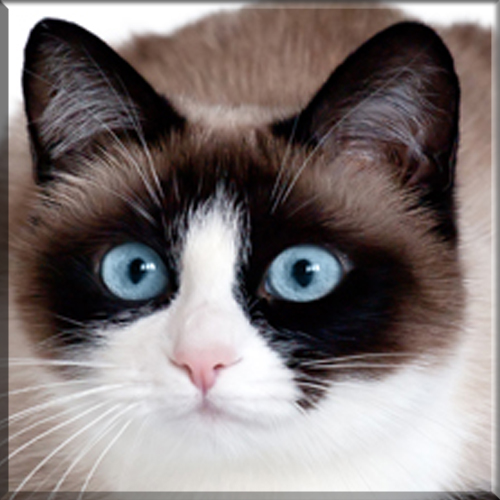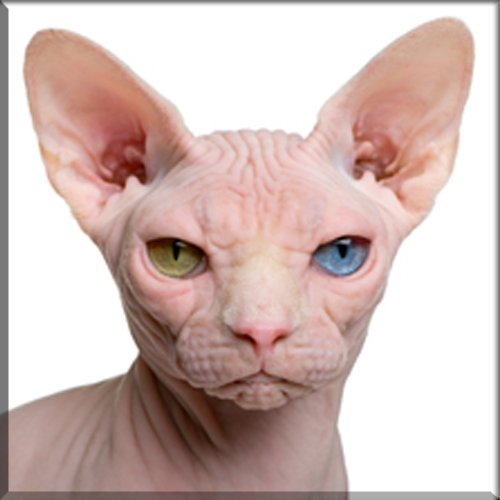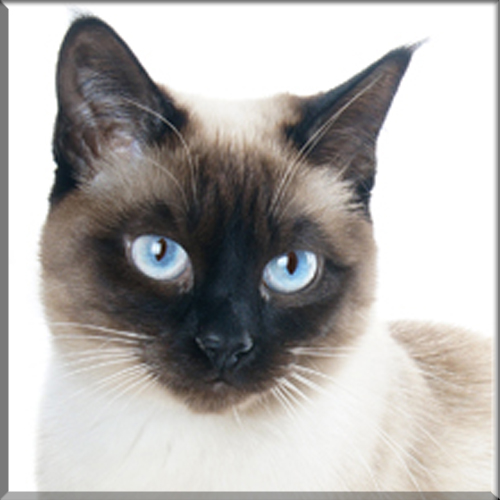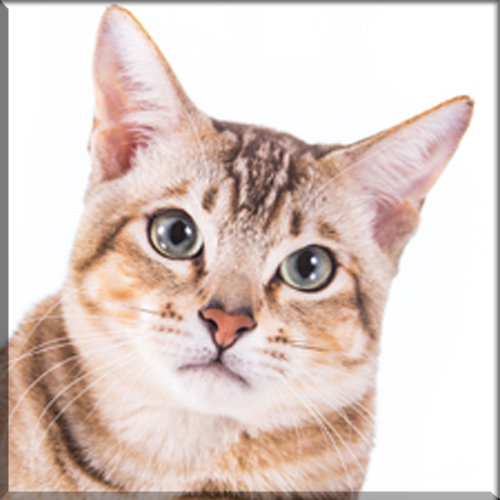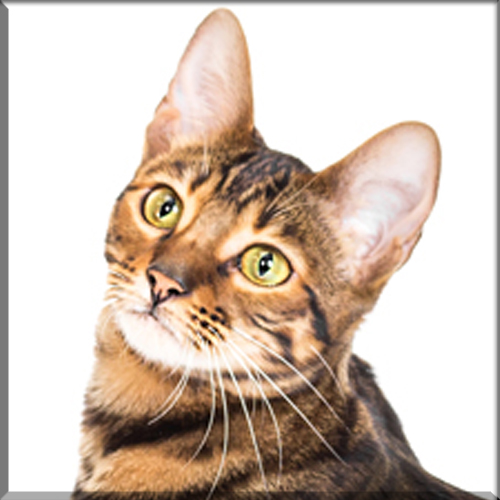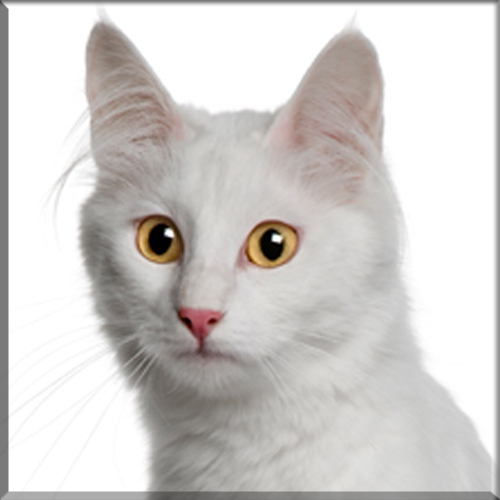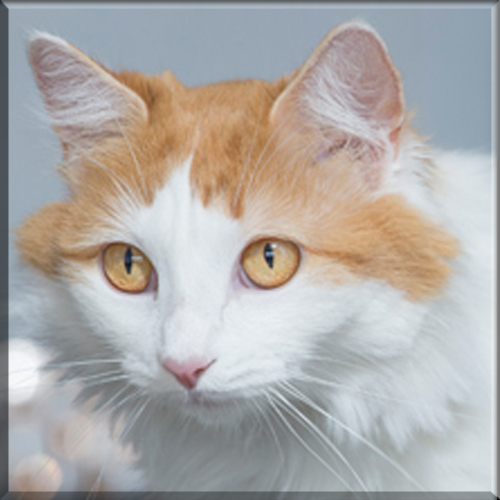Peterbald
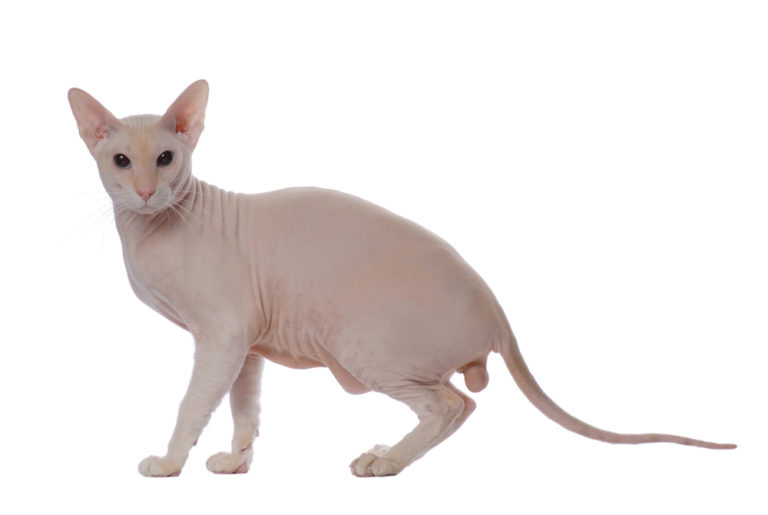
Appearance and features:
Peterbalds resemble Oriental Shorthairs. They have a hair-losing gene and can be born bald, flocked, velour, brush, or with a straight coat. Those born with hair, excepting the straight-coats, can lose their hair over time. They come in all colors and markings.
Members of the breed have a slim and muscular build. They have a narrow and long head with a straight profile, almond-shaped eyes, wedge-shaped muzzle, and large, set-apart ears. They have a long whip-like tail, webbed feet and oval paws that allow them to grasp objects and open levered doorknobs.
Size:
This is a medium-size cat weighing 6 to 10 pounds.
Family:
Peterbald are the result of a breeding between the hairless Donskoy and the Oriental Shorthair.
Coloring:
Available in a large range of colors including color point.
Origin:
The Peterbald breed was born during the latter half of 1994 in St. Petersburg, Russia, the result of an experimental mating of a Don Hairless (also known as Don Sphynx, Donskoy or Donsky) male named Afinogen Myth and an Oriental Shorthair female World Champion named Radma von Jagerhov, by Russian felinologist Olga S. Mironova. The first two litters produced four Peterbald kittens: Mandarin iz Murino, Muscat iz Murino, Nezhenka iz Murino and Nocturne iz Murino. These four Peterbalds were the founders of the breed.
These days the breed develops in the direction of modern Oriental and Siamese types, that is to say a long muzzle, large set-apart ears, flat cheekbones, and an elegant body on long legs. Therefore, all standards for this breed encourage mating with Oriental and Siamese cats and semi-longhair variations of those (such as Balinese and Javanese). The Balinese and Javanese were eliminated from the acceptable outcross list in 2005.
Temperament:
Peterbalds are sweet-tempered, affectionate, peaceful, curious, smart, and energetic. They are medium vocal and tend to follow their owners and want to be with them. Peterbalds typically live in harmony with other cats and pets, and also with children.
Health concerns:
Breed Characteristics
Here is a helpful guide for the different characteristics of the breed. On a Scale of 1-5. 1 being very low level to 5 being high level.
Hypoallergenic: Yes
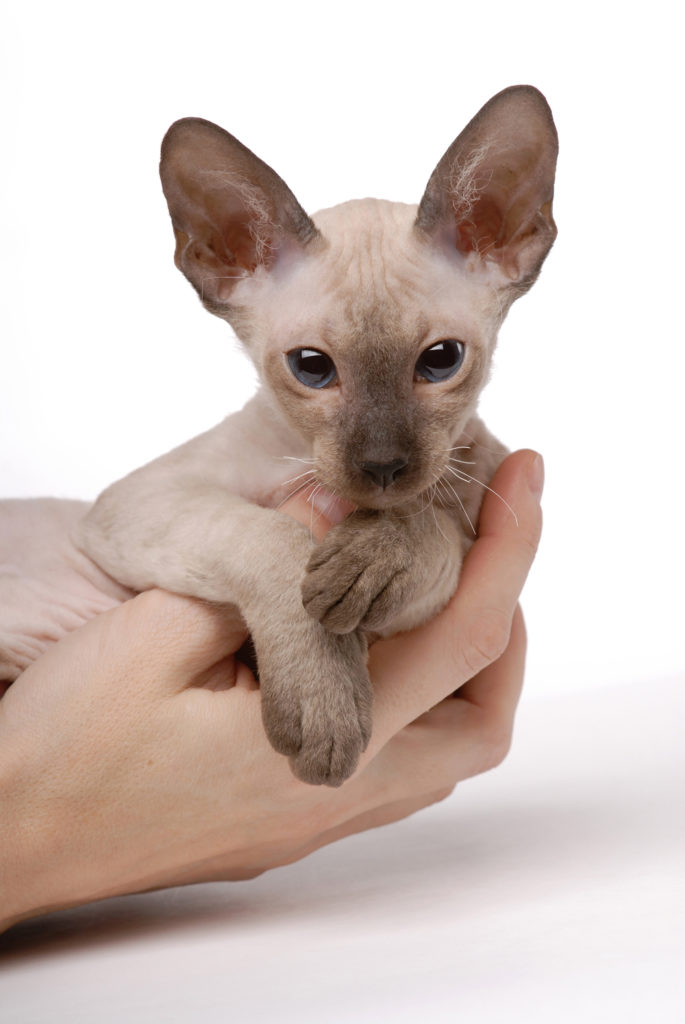
Breeders With Currently Available Kittens
All The Cat Breeds
- Abyssinian
- American Bobtail
- American Curl
- American Shorthair
- American Wirehair
- Balinese
- Bengal
- Birman
- Bombay
- British Shorthair
- Burmese
- Burmillia
- Charteux
- Chausie
- Colorpoint Shorthair
- Cornish Rex
- Devon Rex
- Donskoy
- Egyption Mau
- European Burmese
- Exotic
- Havana Brown
- Highlander
- Himalayan
- Japanese Bobtail
- Khao Manee
- Korat
- LaPerm
- Lykoi
- Maine Coon
- Manx
- Minuet / Napolean
- Munchkin
- Norwegian Forest Cat
- Ocicat
- Oriental Longhair
- Oriental Shorthair
- Persian
- Peterbald
- Pixie Bob
- Ragamuffin
- Ragdoll
- Russian Blue
- Savannah
- Scottish Fold
- Scottish Straight
- Selkirk Rex
- Seychellois
- Siamese
- Siberian
- Singapora
- Snowshoe
- Somali
- Sphynx
- Thai
- Tonkinese
- Toyger
- Turkish Angora
- Turkish Van
